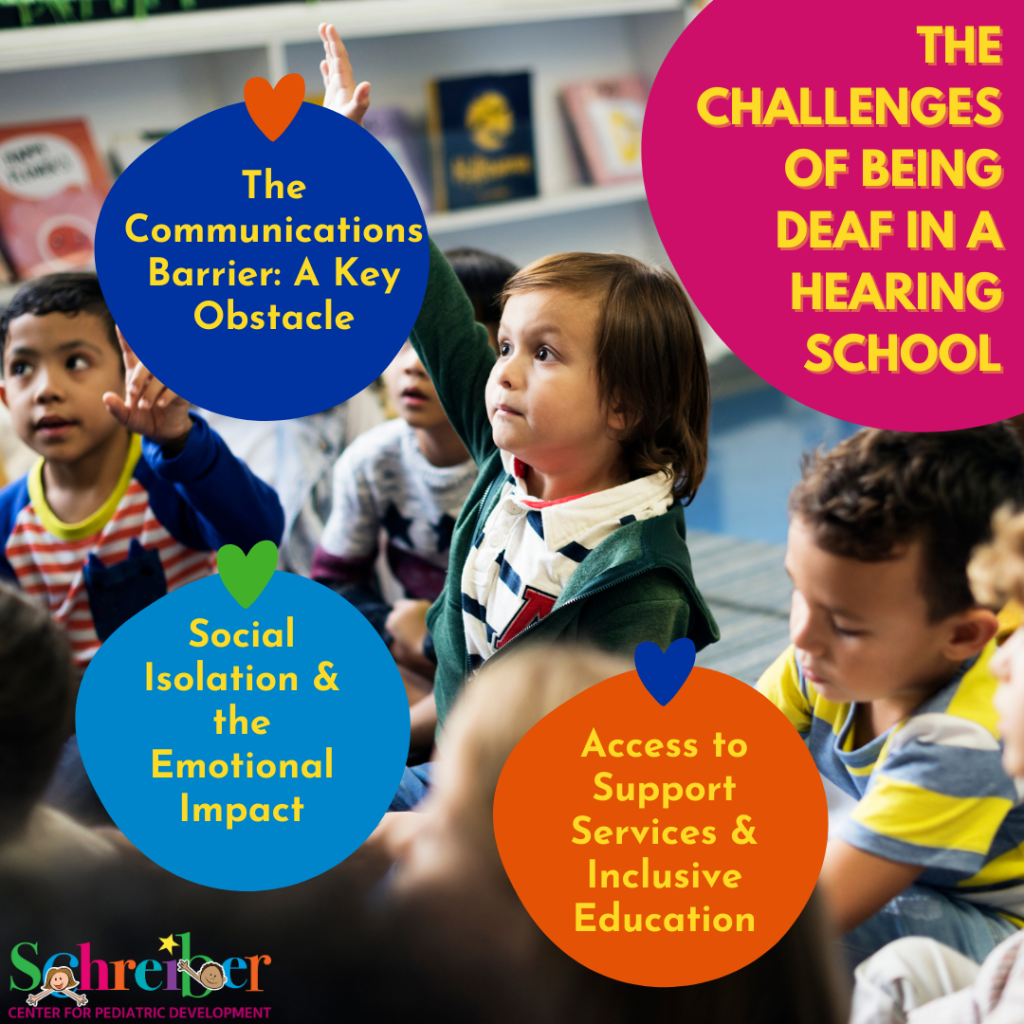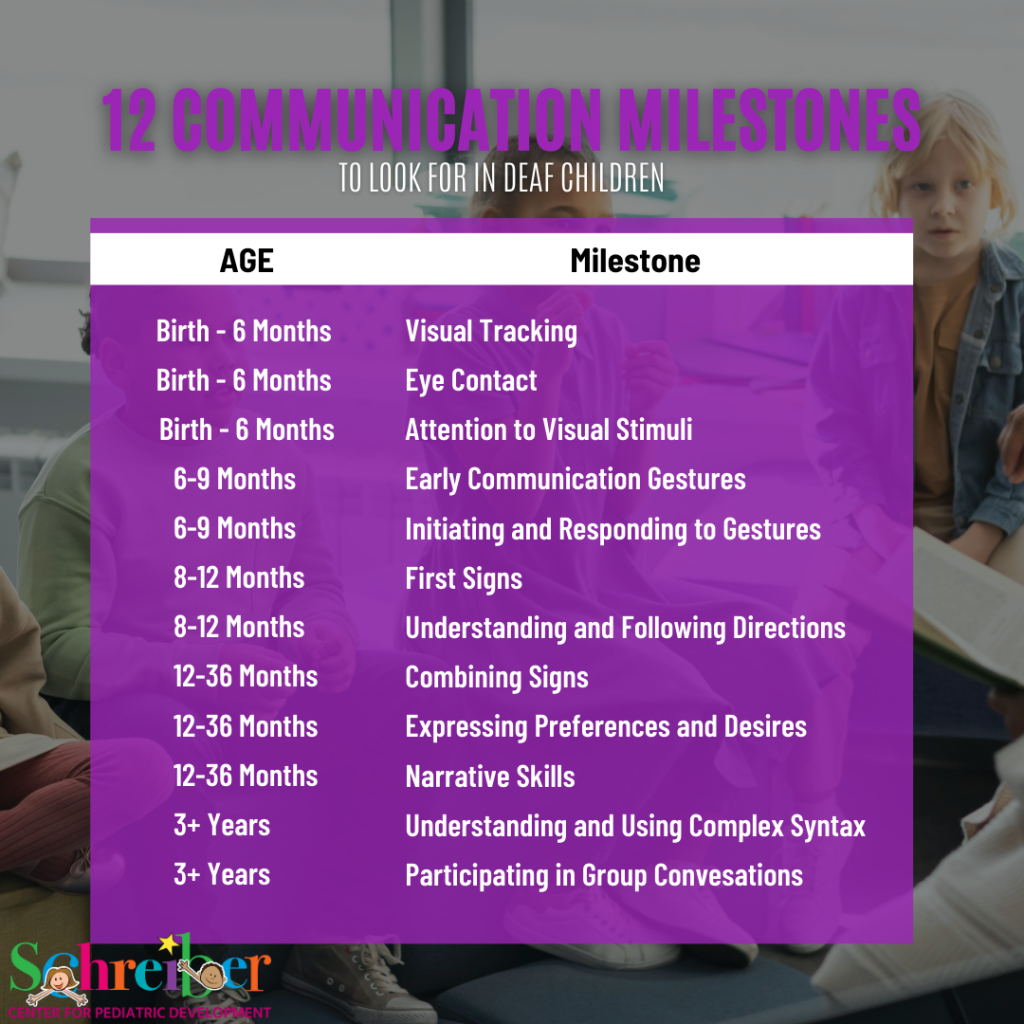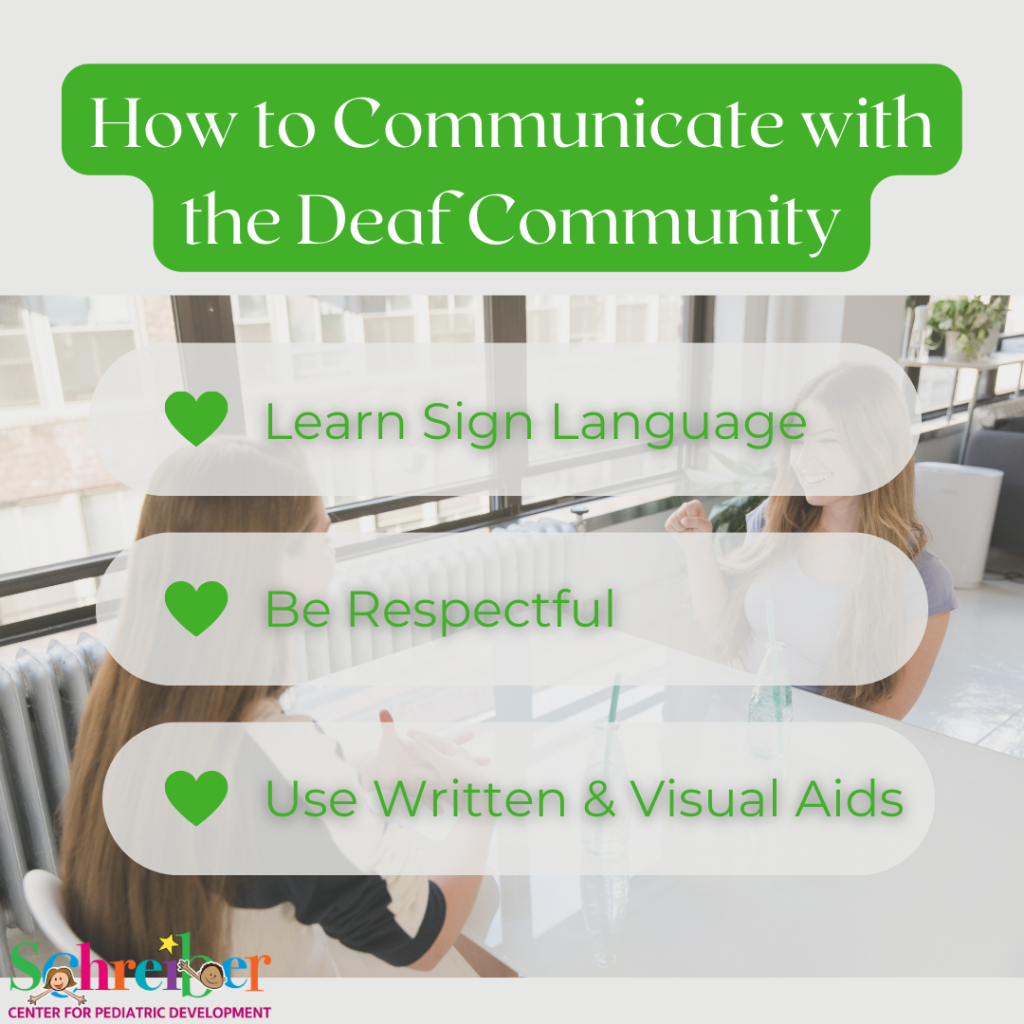Tag: deaf community
The Challenges Of Being Deaf In A Hearing School
September 20, 2023School can be a difficult space for any child to navigate, but when you add the additional challenge of being deaf, the difficulties only grow. By shining a light on the unique challenges that children who are deaf encounter in school we hope to help minimize them.
The Communication Barrier: A Key Obstacle
One of the most significant challenge that Deaf children face in school is the communication barrier. This barrier extends beyond the classroom, affecting interactions with both peers and teachers. Deaf children often encounter difficulties in fully understanding and engaging with lessons due to limited access to auditory information. This, in turn, can lead to academic delays, as their access to information is restricted.
Furthermore, a lack of awareness and training among teachers about the specific needs of deaf children can increase these challenges. Without proper training, educators might struggle to adapt their teaching methods to accommodate different learning styles and communication preferences. The result is that the potential of deaf students may go unrecognized and underdeveloped.
Social Isolation and the Emotional Impact
Education is not just about gaining knowledge; it also shapes a person’s social development. For children who are deaf, this can be a double-edged sword. Limited communication opportunities can isolate them from their hearing peers, making it difficult to form friendships and engage in extracurricular activities, clubs, and sports. A traditional classroom settings might not provide the necessary environment for effective communication, which can lead to a sense of isolation.
The consequences of such isolation are significant. Deaf children may face bullying and teasing due to their differences, which can lead to emotional distress and lower self-esteem. The lack of social interaction can hinder their emotional well-being and overall growth.
Access to Support Services and Inclusive Education
Access to appropriate support services is necessary to help mitigate these challenges. Sign language interpreters and note-takers help ensure effective communication and learning for deaf students. However, these services are not always available or properly implemented in educational institutions.
Inclusive education, which ensures all students receive equitable opportunities for learning and participation, is a cornerstone for breaking down barriers. Creating an environment that fosters inclusivity goes beyond just providing services—it entails changing attitudes and practices, and embracing the unique perspectives and strengths that each student brings.
The Power of Sign Language
A key solution to bridging the communication gap lies in the widespread adoption of American Sign Language (ASL). ASL is not just a language; it’s a pathway to breaking down communication barriers and fostering understanding between deaf and hearing individuals. By promoting ASL as a fundamental skill, we can lay the groundwork for a more inclusive and supportive educational experience for deaf children.
Building an Inclusive Future
In celebration of the International Week of the Deaf, it’s crucial to remember that the challenges faced by deaf children in school are not insurmountable. Through appropriate accommodations, specialized support services, comprehensive teacher training, and the promotion of sign language, we can create an environment where all children, regardless of their hearing ability, have equal access to quality education and social integration.
If you child is Deaf and you are interested in learning more about how Schreiber’s Pediatric Therapies can help your child visit: http://www.schreiberpediatric.org/therapy-services/
As a nationally recognized pediatric facility, the Schreiber Center for Pediatric Development provides family-centered education and therapy programs for infants, children and adolescents with disabilities, developmental delays, and acquired injuries. Our goal-oriented approach maximizes each child’s ability to function independently within the community.

12 Communication Milestones to Look for in Deaf Children
September 19, 2023When it comes to the developmental journey of babies and children who are deaf, American Sign Language (ASL) communication milestones play an important role. Knowing what unique milestones to look for in babies, toddlers, and children who are deaf, allows caregivers to better understand the progression of communication skills. This article outlines 12 communication milestones caregivers of deaf children should look for to help guide their children on their unique communication journey through ASL.
Birth-6 Months: Building the Visual Foundation
1. Visual Tracking: From birth to six months, babies who are deaf begin to visually track moving objects and people. This foundational skill paves the way for their engagement in sign language communication.
2. Eye Contact: Establishing eye contact with caregivers and responding to visual cues is crucial for effective communication in ASL. Babies who are deaf develop this ability, enabling meaningful interactions.
3. Attention to Visual Stimuli: Infants who are deaf often display heightened attentiveness to colorful objects and gestures. This is because they rely on their sense of sight for communication input.
6-9 Months: Early Gestures and Interaction
4. Early Communication Gestures: Deaf babies might initiate simple gestures like waving “bye-bye” or raising their arms to be picked up. They could also display signs of wanting more, pointing at objects, or imitating gestures.
5. Initiating and Responding to Gestures: Babies who are deaf begin building the foundation for back-and-forth communication by both initiating their gestures to express needs or interests and responding to gestures from caregivers.
8-12 Months: Transition to First Signs
6. First Signs: The transition from gestures to recognizable signs like “milk,” “eat,” or “mom” starts around 8-12 months old. These initial signs become the building blocks for more intricate communication.
7. Understanding and Following Directions: Deaf babies gradually grasp the ability to comprehend and follow simple sign language directions like “come here” or “give me.”
12-36 Months: Forming Complex Communication
8. Combining Signs: Toddlers who are deaf begin combining signs to form two-word phrases between 1 and 3 years old. This progression allows them to express more complex thoughts and desires.
9. Expressing Preferences and Desires: As toddlers learn more ASL, they use signs to voice preferences, wants, and dislikes. This allows them to increase their ability to actively engage in conversations.
10. Narrative Skills: As they progress and broaden their signing vocabulary children who are deaf are able to convey simple stories and describe events using ASL, nurturing their narrative skills.
3+ Years: Maturing Communication Abilities
11. Understanding and Using Complex Syntax: As children who are deaf grow, their ASL skills evolve to include more complex sentence structures and grammatical features, enhancing their overall communication abilities.
12. Participating in Group Conversations: Proficiency in group conversations, topic tracking, and turn-taking is a significant milestone for children who are deaf using ASL. This skill underscores their ability to engage actively in social settings.
Remember that every child follows their own developmental path. Early exposure to ASL, consistent interaction, and access to a supportive environment are all important to helping babies, toddlers, and children who are deaf develop ASL skills. Celebrating these communication milestones helps to foster a culture of inclusivity, understanding, and effective communication for all.
If you child is Deaf and you are interested in learning more about how Schreiber’s Pediatric Therapies can help your child visit: http://www.schreiberpediatric.org/therapy-services/
As a nationally recognized pediatric facility, the Schreiber Center for Pediatric Development provides family-centered education and therapy programs for infants, children and adolescents with disabilities, developmental delays, and acquired injuries. Our goal-oriented approach maximizes each child’s ability to function independently within the community.

How to Communicate with the Deaf Community
September 18, 2023In a world that strives for diversity and inclusivity, it’s essential to recognize and celebrate different cultures and communities. Today marks the beginning of the International Week of the Deaf, a time dedicated to fostering understanding and connection with the Deaf community. This presents a wonderful opportunity to delve into the realm of inclusivity and explore some invaluable tips for engaging meaningfully with people who are Deaf.
Discovering the World of Sign Language
Taking the time to learn a few basic American Sign Language (ASL) signs and gestures is one of the most meaningful steps you can take to embrace inclusivity and engage with the Deaf community. You may think that learning an entirely new language sounds daunting, but taking the time to master even a few fundamental signs can go a long way in bridging the communication gap between the hearing and the Deaf.
Eye Contact, Facial Expressions, and Personal Space
Maintaining consistent eye contact when communicating with anyone is respectful, but especially important in conversations with people who are Deaf. When Deaf people talk to each other they are most often maintaining eye contact. While a hearing person may only see hands forming ASL signs, when it comes to communicating using ASL facial expressions convey tone, emotion, and context. Because facial expressions play a crucial role in sign language, it is important to make sure that when you are communicating with a person who is Deaf your face is well lit and able to be seen easily. As a visual language ASL also requires additional personal space, and maintaining that space shows both consideration and respect, promoting a welcoming atmosphere that encourages open communication.
When to Write it Out & Use Visual Aids
If you find yourself in a situation where complex information needs to be shared, and you are not fluent in ASL, it can be useful to use a pen and paper, or electronic notes device to communicate instead. Using visual aids is a great way to enhance communication with a person, or people, who are deaf, especially in group settings. Utilizing tools like presentations or written materials ensures that everyone in the group is on the same page.
Eliminating the barriers of misunderstanding and allowing for accurate exchange of information is important but remember that while this approach is practical and ensures seamless information sharing it can be alienating as it removes human emotion from the conversation. Learning basic ASL and using it before resorting to writing out your message can help maintain connection during the conversation.
Commit to Inclusivity Everyday
By taking steps to learn and use basic American Sign Language (ASL) signs, respecting the significance of eye contact, facial expressions, and personal space, and incorporating written communication and visual aids when needed, we can dismantle communication barriers between the hearing and Deaf communities. When we commit to inclusivity everyday, we can create meaningful interactions and change the world for the better. We challenge you to take these tips to heart and share them with your family and friends.
If you child is Deaf and you are interested in learning more about how Schreiber’s Pediatric Therapies can help your child visit: http://www.schreiberpediatric.org/therapy-services/
As a nationally recognized pediatric facility, the Schreiber Center for Pediatric Development provides family-centered education and therapy programs for infants, children and adolescents with disabilities, developmental delays, and acquired injuries. Our goal-oriented approach maximizes each child’s ability to function independently within the community.
